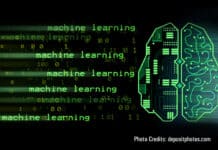Executive Track Associates (ETA) is a search and recrutiment consulting firm with its headquarters in Delhi. It has offices in seven different locations in India—New Delhi, Mumbai, Chennai, Coimbatore, Hyderabad, Pune and Bangalore. Founded by Adarsh Matta, an engineer and alumnus of IIM-Ahmedabad, ETA works not only to provide services to its clients but also helps them to find the right fit. According to sources in the company, it provides executive solutions to clients including multinationals, entrepreneurial businesses, private equity firms, etc.
With it’s multiple locations and vast spread of verticals, associates at ETA faced a multitude of challenges:
- CV data was scattered in desktop mailboxes spread across the country.
- Classification, storage and retrieval of this data was a major effort.
- Just-in-time availabilty of the right CV was a challenge.
- Required information flow pertaining to placed candidates was a challenge.
- Moreover, advertisements in print and electronic media would result in a huge inflow of CVs, making the task of handling this vital information very cumbersome.
ETA decided that a central data repository of CVs would be the best option whereby searching the repository would be quick and yield useful information which could easily be converted to revenue.
Security was a major concern. This data bank would contain important confidential data and should not be accessible to anyone apart from authorised users. Moreover, most emails containing CVs could also be potential sources for viruses. They also did not want proprietary lock-in so that they would have to be dependant on a single vendor for any change in the application.
They had evaluated various software options available, but none could properly address their concern on security and vendor lock-in, though a few promised extra functionality and features.
Discussing his thoughts with a colleague, Matta was suggested the open source way and referred to Varad Gupta, CTO of Keen & Able Computers Pvt Ltd, a Delhi-based IT-implementation firm that provides open source solutions to its clients. Gupta, an avid believer in the open source model comments, “Open source was the only option that I could suggest to Mr Matta. He wanted the most secure platforms at affordable costs. He wanted an IT setup which would work, rather than invest in an IT team that did most of the work. He wanted performance and reliability affordably. He wanted security from external threats and viruses and most importantly he wanted scalability without any hidden license costs. We suggested an open source model for his infrastructure and application requirements—Human Resource Management System (HRMS).”
In HRMS, the critical area of concern was the data inflow, and classification for quick access and retrieval when desired, for authorised users only. An end-to-end solution, HRMS comprises of the following:
- Mail server (to receive incoming mails, remove viruses and spam)
- VPN servers and clients (to enable site-to-site VPN within various ETA branch offices)
- Application portal for classifying, storage and search
- Reliability and redundancy of centralised data which should be available whenever desired by an authorised user.
HRMS can be implemented in various ways depending on the requirements. It includes functionalities such as payroll management, recruitment management, performance record management and many other HR-related features which can be added as modules. Each of these functions does a specific task and automates some of the work that makes the task of the HR division easier.
The hardware and software used in the set-up
Here’s a brief round-up of the specs:
- The mail server is powered by a Red Hat Enterprise Linux 5 (RHEL 5) using Postfix as the MTA (mail transport agent) on an Intel Xeon-based assembled server with 2 GB of RAM.
- The applications server is again powered by RHEL 5, which runs ETA’s home-brewed ETA Recruitment Management System (ERMS). The ERMS relies on the MySQL database and runs on a Xeon-based assembled server with 4 GB of RAM.
- Distributed Replicated Block Devices are used for data storage and replication. For this, two Core-2-Duo-based server-class assembled PCs with 2 GB RAM each, and 500 GB hard disks (of course, more can be added later) are being used.
The purpose of DRBD is to provide data redundancy and high availability. Its main benefit is that if a server goes down or hard drive gets corrupted, the other server takes over and keeps on supplying data to the system.
Additionally, at ETA, the team has also created an iSCSI using a server board with a fast I/O subsystem. They have two servers, and through clustering they appear as one storage device (iSCSI block device) to the main portal server. Any data that is written, such as a new e-mail coming in, is stored on this device partition by the portal server.
Gupta explains, “The cost of implementing HRMS is minimal. The things required are the hardware infrastructure, RHEL licences, and configuration and maintenance charges. Apart from these, there are no additional licence or software costs, as Apache, PHP, MySQL and Perl are all open source.”
Centralisation of data
Let’s find out how the HRMS works and how data is stored in the central server. Gupta elaborates, “The mail is received by the mail server and is filtered for attachments. This module checks whether attachments exist and whether they are of the defined attachment type. If there are no attachments or if no attachments of the pre-defined type are detected, then the mail is delivered to the user. If an attachment of the desired type (could be multiple attachments and each attachment could be of different types—ODT, DOCX, XLS, PDF, etc) is found, it is stripped and stored in a central repository. A URL for viewing the stripped attachment is created and appended as a footer to the mail. The end result of this process is that new mail is delivered to the user, and the attachment is stored in a central repository.”
Clicking on this URL will take the user to the central repository where the attachment is stored. The users can then categorise the attachment (as CVs, etc). All they now need is a data entry operator to do the mundane work of filling in the CV details (like DOB, Experience, Age, etc) in the fields of a Web-based CV details form. Once classified, anyone who is authorised to view this centralised CV repository can access this CV. It also has a search option—using keywords. This CV can also be searched for any text that it contains using a content search option.
Resistance in the implementation
Any new application implementation always faces a lot of challenges, some technical and some resulting from cultural change. Gupta says, “The users had various requirements and issues, such as whether they could send multiple e-mails at a time, or if they wanted to, could they do things as they earlier did, etc.” Moreover, he explains that technology is never a challenge as long as it is open source, because you can modify programs and applications to suit your needs rather than work in the manner the closed source vendor wants you to. And the concerns of new users can be taken care of by adequate training.
Key benefits
HRMS has advantages for both the end user and the companies. “As an end-user, you can e-mail your resume from anywhere (Gmail/Hotmail/Yahoo or your company mail ID) and it will be automatically uploaded. You save time and do not have to enter all your details on that Web page—simply e-mail the resume you have ready with you. In a second, your data is sent and uploaded onto the server, where authorised people can search and find you among the suitable candidates. For the organisation, centralised data saves a lot of money and energy.”
Security features
So much of work has been done to make the data centralised, but how to secure is it? When we talk about security in the context of the application, CVs can be viewed by anybody in their browser but only authorised log-ins can download the CVs onto their desktop. The second important thing regarding security is that all the branches are on site-to-site VPN (Virtual Private Network). The portal is not accessible via the Internet. Therefore, only people who are in the office or senior members of the management with VPN connections at home can log into the site.
The road map ahead
Every application has scope for improvement, and so is the case with this project. HRMS is in the first phase of its evolution, according to Matta. “We intend to take it to the second phase, where we want the whole system to be automated, such that whenever a mail is received by ETA, all the work, starting from scanning the mail to the mundane data entry work, is done by the application itself,” he says. Now, this will be something to look forward to.


















































































